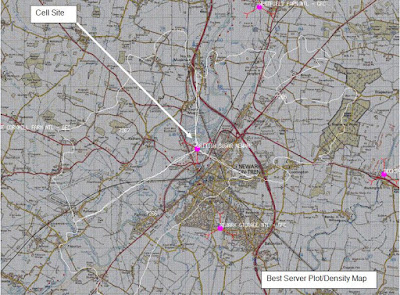3G USIM 2G SIM Service Numbers
3G USIM (2010-04)Service n°1: Local Phone Book
Service n°2: Fixed Dialling Numbers (FDN)
Service n°3: Extension 2
Service n°4: Service Dialling Numbers (SDN)
Service n°5: Extension3
Service n°6: Barred Dialling Numbers (BDN)
Service n°7: Extension4
Service n°8: Outgoing Call Information (OCI and OCT)
Service n°9: Incoming Call Information (ICI and ICT)
Service n°10: Short Message Storage (SMS)
Service n°11: Short Message Status Reports (SMSR)
Service n°12: Short Message Service Parameters (SMSP)
Service n°13: Advice of Charge (AoC)
Service n°14: Capability Configuration Parameters 2 (CCP2)
Service n°15: Cell Broadcast Message Identifier
Service n°16: Cell Broadcast Message Identifier Ranges
Service n°17: Group Identifier Level 1
Service n°18: Group Identifier Level 2
Service n°19: Service Provider Name
Service n°20: User controlled PLMN selector with Access Technology
Service n°21: MSISDN
Service n°22: Image (IMG)
Service n°23: Support of Localised Service Areas (SoLSA)
Service n°24: Enhanced Multi Level Precedence and Pre emption Service
Service n°25: Automatic Answer for eMLPP
Service n°26: RFU
Service n°27: GSM Access
Service n°28: Data download via SMS-PP
Service n°29: Data download via SMS CB
Service n°30: Call Control by USIM
Service n°31: MO-SMS Control by USIM
Service n°32: RUN AT COMMAND command
Service n°33: shall be set to '1'
Service n°34: Enabled Services Table
Service n°35: APN Control List (ACL)
Service n°36: Depersonalisation Control Keys
Service n°37: Co-operative Network List
Service n°38: GSM security context
Service n°39: CPBCCH Information
Service n°40: Investigation Scan
Service n°41: MExE
Service n°42: Operator controlled PLMN selector with Access Technology
Service n°43: HPLMN selector with Access Technology
Service n°44: Extension 5
Service n°45: PLMN Network Name
Service n°46: Operator PLMN List
Service n°47: Mailbox Dialling Numbers
Service n°48: Message Waiting Indication Status
Service n°49: Call Forwarding Indication Status
Service n°50: Reserved and shall be ignored
Service n°51: Service Provider Display Information
Service n°52 Multimedia Messaging Service (MMS)
Service n°53 Extension 8
Service n°54 Call control on GPRS by USIM
Service n°55 MMS User Connectivity Parameters
Service n°56 Network's indication of alerting in the MS (NIA)
Service n°57 VGCS Group Identifier List (EFVGCS and EFVGCSS)
Service n°58 VBS Group Identifier List (EFVBS and EFVBSS)
Service n°59 Pseudonym
Service n°60 User Controlled PLMN selector for I-WLAN access
Service n°61 Operator Controlled PLMN selector for I-WLAN access
Service n°62 User controlled WSID list
Service n°63 Operator controlled WSID list
Service n°64 VGCS security
Service n°65 VBS security
Service n°66 WLAN Reauthentication Identity
Service n°67 Multimedia Messages Storage
Service n°68 Generic Bootstrapping Architecture (GBA)
Service n°69 MBMS security
Service n°70 Data download via USSD and USSD application mode
Service n°71 Equivalent HPLMN
Service n°72 Additional TERMINAL PROFILE after UICC activation
Service n°73 Equivalent HPLMN Presentation Indication
Service n°74 Last RPLMN Selection Indication
Service n°75 OMA BCAST Smart Card Profile
Service n°76 GBA-based Local Key Establishment Mechanism
Service n°77 Terminal Applications
Service n°78 Service Provider Name Icon
Service n°79 PLMN Network Name Icon
Service n°80 Connectivity Parameters for USIM IP connections
Service n°81 Home I-WLAN Specific Identifier List
Service n°82 I-WLAN Equivalent HPLMN Presentation Indication
Service n°83 I-WLAN HPLMN Priority Indication
Service n°84 I-WLAN Last Registered PLMN
Service n°85 EPS Mobility Management Information
Service n°86 Allowed CSG Lists and corresponding indications
Service n°87 Call control on EPS PDN connection by USIM
Service n°88 HPLMN Direct Access
Service n°89 eCall Data
Service n°90 Operator CSG Lists and corresponding indications
------------------------------------------------------------------
2G SIM (2007-06)Service n°1 : CHV1 disable function
Service n°2 : Abbreviated Dialling Numbers (ADN)
Service n°3 : Fixed Dialling Numbers (FDN)
Service n°4 : Short Message Storage (SMS)
Service n°5 : Advice of Charge (AoC)
Service n°6 : Capability Configuration Parameters (CCP)
Service n°7 : PLMN selector
Service n°8 : RFU
Service n°9 : MSISDN
Service n°10: Extension1
Service n°11: Extension2
Service n°12: SMS Parameters
Service n°13: Last Number Dialled (LND)
Service n°14: Cell Broadcast Message Identifier
Service n°15: Group Identifier Level 1
Service n°16: Group Identifier Level 2
Service n°17: Service Provider Name
Service n°18: Service Dialling Numbers (SDN)
Service n°19: Extension3
Service n°20: RFU
Service n°21: VGCS Group Identifier List (EFVGCS and EFVGCSS)
Service n°22: VBS Group Identifier List (EFVBS and EFVBSS)
Service n°23: enhanced Multi-Level Precedence and Pre-emption Service
Service n°24: Automatic Answer for eMLPP
Service n°25: Data download via SMS-CB
Service n°26: Data download via SMS-PP
Service n°27: Menu selection
Service n°28: Call control
Service n°29: Proactive SIM
Service n°30: Cell Broadcast Message Identifier Ranges
Service n°31: Barred Dialling Numbers (BDN)
Service n°32: Extension4
Service n°33: De-personalization Control Keys
Service n°34: Co-operative Network List
Service n°35: Short Message Status Reports
Service n°36: Network's indication of alerting in the MS
Service n°37: Mobile Originated Short Message control by SIM
Service n°38: GPRS
Service n°39: Image (IMG)
Service n°40: SoLSA (Support of Local Service Area)
Service n°41: USSD string data object supported in Call Control
Service n°42: RUN AT COMMAND command
Service n°43: User controlled PLMN Selector with Access Technology
Service n 44: Operator controlled PLMN Selector with Access Technology
Service n 45 HPLMN Selector with Access Technology
Service n 46: CPBCCH Information
Service n 47: Investigation Scan
Service n°48: Extended Capability Configuration Parameters
Service n°49: MExE
Service n°50 Reserved and shall be ignored




















